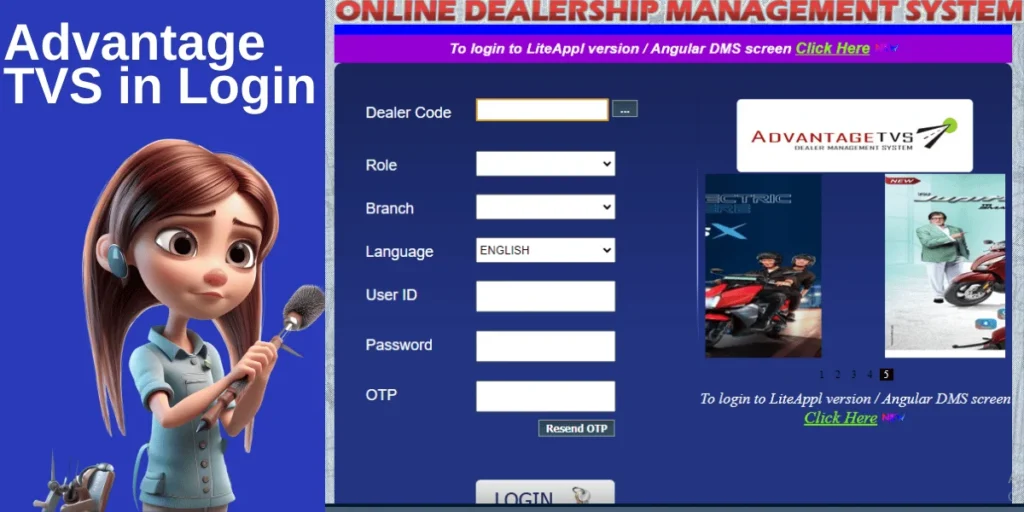Advantage TVS in Login: Enhancing Security and User Experience
In today’s digital world, login systems are an essential part of online security, and ensuring their efficiency is crucial for both users and businesses. One of the most effective methods to enhance security and streamline the login process is the use of TVS (Two-Step Verification System). The advantage TVS in login systems provides a higher level of security, reducing the risk of unauthorized access and protecting sensitive information. In this article, we will discuss the key benefits of using TVS in login, how it works, and why it’s becoming a standard in many applications.
What is TVS in Login Systems?
TVS (Two-Step Verification System), also known as Two-Factor Authentication (2FA), is a security process that requires users to provide two different authentication factors to verify their identity. Unlike traditional login methods, which only ask for a password, TVS in login adds an additional layer of protection, making it more difficult for hackers to gain access.
The two factors used in TVS in login are:
- Something You Know: This could be a password or PIN.
- Something You Have: A physical item like a smartphone or a one-time code sent via SMS or email.
This dual-step process ensures that even if a hacker has your password, they would still need the second factor (typically a mobile device) to access the account.
How Does TVS Work in Login Systems?

The advantage TVS in login lies in its simplicity and effectiveness. Here’s how it works:
- Initial Login: When you attempt to log in, you first enter your username and password.
- Second Authentication: After entering the correct credentials, the system prompts you for a second authentication factor. This can be a one-time code sent to your phone, an authentication app like Google Authenticator, or even a biometric verification like fingerprint or facial recognition.
- Access Granted: Once both factors are successfully verified, you gain access to the system.
The advantage TVS in login is that even if someone gets hold of your password, they can’t log in without access to your second authentication factor. This drastically reduces the risk of hacking and identity theft.
Key Advantages of TVS in Login Systems
Enhanced Security
One of the biggest advantages of TVS in login is the enhanced security it provides. Passwords alone are often not enough to protect accounts. With the increase in data breaches and phishing attacks, passwords can easily be stolen or guessed. However, adding a second verification factor makes it exponentially harder for unauthorized users to access accounts.
Prevention of Unauthorized Access
Even if a hacker obtains a user’s login credentials, they still need the second factor to complete the login process. This is a significant advantage of TVS in login as it blocks unauthorized access, even if passwords are compromised. The use of time-sensitive codes or biometric data ensures that only authorized users can gain entry.
User-Friendly
Contrary to what some may believe, TVS in login is incredibly user-friendly. Once set up, users can easily follow the verification steps without needing extensive technical knowledge. Many systems offer options for users to select their preferred second factor, making it a flexible and customizable solution.
Reduced Risk of Phishing
Phishing attacks are one of the most common ways that hackers gain access to sensitive information. By tricking users into entering their credentials on fake websites, hackers can steal passwords. However, with TVS in login, even if the password is stolen, the second factor (such as a one-time code sent to a phone) is required, making it much harder for hackers to gain full access.
Cost-Effective Security Measure
For businesses, implementing TVS in login systems is a cost-effective way to enhance security without investing in expensive infrastructure. Many two-step verification methods, like SMS-based codes or email-based authentication, are easy to implement and require minimal costs. This offers a significant return on investment, as it drastically reduces the chances of data breaches, which can be far more expensive to fix.
Compliance with Industry Standards
In many industries, especially those handling sensitive information like finance or healthcare, the use of TVS in login is becoming a compliance requirement. Adopting two-step verification helps businesses adhere to security standards and regulations, ensuring that they meet legal requirements for data protection.
Improved Trust with Users
Implementing TVS in login also improves trust with users, particularly in sectors where data security is paramount. When users see that a platform is taking extra steps to protect their information, it fosters a sense of reliability and trustworthiness. This can be a key differentiator for businesses that prioritize security.
Mobile Integration
Another advantage of TVS in login is the seamless integration with mobile devices. Most two-step verification processes use mobile phones as the second authentication factor, either by sending a code via SMS or by using an authentication app. This makes it convenient for users to verify their identity on the go.
Protection from Keyloggers
Keyloggers are malicious programs that record keystrokes, allowing hackers to capture passwords. However, with TVS in login, keyloggers alone are ineffective because the second verification factor is required. This adds another layer of protection against these types of attacks.
Flexibility in Authentication Methods
TVS in login systems offer a variety of second-factor options, such as:
- SMS or Email-based Codes
- Authenticator Apps
- Biometrics (fingerprint, facial recognition)
- Hardware Tokens
This flexibility allows users to choose the method that best suits their needs, making the login process more convenient while maintaining security.
Challenges of TVS in Login Systems
While the advantage of TVS in login is clear, it’s essential to acknowledge some of the challenges associated with its implementation:
1. Dependence on Mobile Devices
Since many TVS systems rely on mobile phones, users who lose access to their phones may face difficulties logging in. Backup methods, such as recovery codes, are often necessary to mitigate this risk.
2. User Resistance
Some users may initially resist using TVS in login due to concerns about the added complexity. However, as users become more familiar with the system, they often find it easy and convenient to use.
3. Potential for Delays
In some cases, there may be a slight delay in receiving the second-factor code, particularly with SMS-based verification. While this is rare, it can be an inconvenience in time-sensitive situations.
Also read: axisdirect login | kalupur bank login
Conclusion
The advantage TVS in login systems offers far outweighs any potential challenges. By providing enhanced security, preventing unauthorized access, and reducing the risk of phishing attacks, TVS in login has become an essential tool for both businesses and individuals. Its user-friendly nature, cost-effectiveness, and compliance with industry standards make it a must-have feature for any system that prioritizes security.
As cyber threats continue to evolve, adopting TVS in login is a proactive measure that ensures the safety of sensitive data. Whether you’re a business looking to protect your customers or an individual safeguarding personal accounts, TVS in login offers the perfect balance between security and convenience.
FAQ: Advantage TVS in Login
1. How does TVS improve login security?
TVS improves login security by requiring two factors for authentication: something the user knows (like a password) and something the user has (like a one-time code sent to their phone). This makes it significantly harder for unauthorized users to gain access to accounts.
2. Are there any challenges associated with TVS in login systems?
Yes, some challenges include user resistance to adopting new security measures, dependence on mobile devices for receiving codes, and potential delays in receiving the second-factor code.
3. How can businesses implement TVS in their login systems?
Businesses can implement TVS by integrating authentication APIs or platforms that provide two-step verification services. Many popular authentication apps and services offer easy-to-integrate solutions for adding TVS to login processes.
4. Can TVS completely eliminate the risk of unauthorized access?
While TVS significantly reduces the risk of unauthorized access, no system can guarantee complete security. It is one layer of protection among many that should be implemented as part of a comprehensive security strategy.






